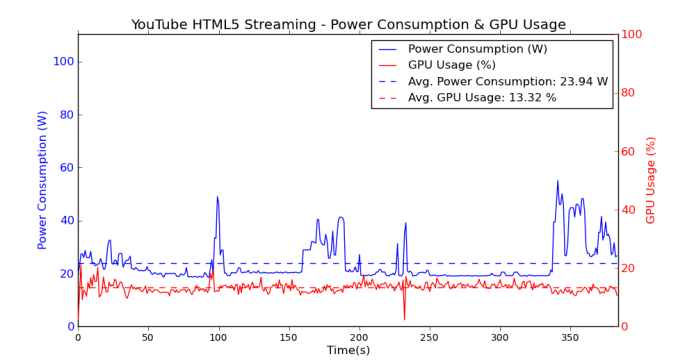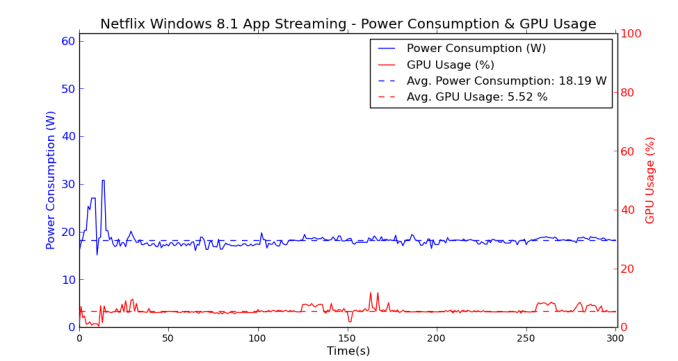GIGABYTE BRIX Pro: A Second Look at the Intel i7-4770R with Iris Pro HD 5200
by Ganesh T S on June 14, 2014 5:00 PM ESTHTPC Credentials
Accuracy of display refresh rate, efficiency while streaming OTT content and the ability to use powerful video renderers such as madVR are some of the primary points of interest in terms of HTPC usage.
Custom Refresh Rates
In our initial Haswell HTPC review, we found that Haswell provided excellent display refresh rate accuracy. Our experience with the BRIX Pro was no different.
The gallery below presents some of the other refresh rates that we tested out. madVR reports frame drops / repeats only once every 6 hours or more in the quiescent state.
While it is not easy to configure custom resolutions / refresh rates from the main UI for the graphics configuration, it is possible to set the refresh rates manually by deselecting the 'Hide Unsupported Monitor Modes' in the monitor properties. I was able to successfully drive the display at 50 Hz on the Sony KDL46EX720 using this method.
Network Streaming Efficiency
Evaluation of OTT playback efficiency was done by playing back our standard YouTube test stream and five minutes from our standard Netflix test title. Using HTML5, the YouTube stream plays back a 720p encoding, while Adobe Flash delivers a 1080p stream. The power consumption at the wall as well as the GPU usage while playing them on Mozilla Firefox are provided in the graphs below.
Netflix streaming evaluation was done using the Windows 8.1 Netflix app. Manual stream selection is available (Ctrl-Alt-Shift-S) and debug information / statistics can also be viewed (Ctrl-Alt-Shift-D). Statistics collected for the YouTube streaming experiment were also collected here.
It is a bit surprising that Flash streaming (at a higher resolution) seems to be more efficient in terms of resource usage compared to HTML5. On the Netflix front, GPU usage for the decoding of the 5.8 Mbps video stream is pretty low and power consumption is quite low given the CPU inside. However, it can't rival the efficiency of the D54250WYK NUC kits (which utilize ULV CPUs) when it comes to video decoding / streaming efficiency.
Notes on madVR
Given the better GPU available in the Core i7-4770R, it can be expected that the madVR capabilities are slightly better than what we found in the initial Haswell HTPC review. In that review, decoding and rendering benchmark numbers for madVR, as well as other renderers, were presented. Those tests were performed on a i7-4765T. The i7-4770R in the BRIX Pro has a slightly higher TDP. There should be no cause for concern as to whether the BRIX Pro can perform as well as the Haswell HTPC that we presented in our initial review with respect to those aspects.
Andrew Van Til put the BRIX Pro through some madVR tests in his MissingRemote review and came away with the conclusion that Lanczos 4-tap with anti-ringing as well as Jinc 3-tap with anti-rining work for all types of contents (resolutions / frame rates up to 1080p) except for 720p60.
On the whole, the performance of the BRIX Pro as a HTPC is as expected. However, those looking for a pure HTPC solution would do well to consider other alternatives. In our opinion, the incremental madVR capabilities are not worth the noisy cooling solution. The other aspects that the BRIX Pro excels at are easily achieved using other Haswell-based machines (including the Intel NUC).



















55 Comments
View All Comments
basroil - Sunday, June 15, 2014 - link
Lets put some kinect fusion data in there, this computer is basically begging to be put on a robot!TomWomack - Sunday, June 15, 2014 - link
Do you know of any company planning to release an i7/4770R on a board which can be put into a reasonably-cooled box, rather than in a size-optimised cooling-constrained one?Qwertilot - Sunday, June 15, 2014 - link
No idea. It does sound a bit like Broadwell K should basically do that when it rolls around though.(While presumably performing better too.).
duploxxx - Monday, June 16, 2014 - link
Would really be interested in putting some AMD based solutions next to that, for sure on the very high price of that box.Secondly you clearly see that high res is impossible to play on iris due to the low eDRAM size. so you can say that AMD APU parts really need high speed memory, but you know that the iris pro will never make it for high res even with better memory. so it fails in delivering future.
duploxxx - Monday, June 16, 2014 - link
if you combine a few reviews and look at the Kaveri launch then the 4770R with edram intel part delivers the gpu performance of the same A8-7600 at the same 65W package but probably 3x more expensive... so you don't need to buy this box for gaming, you are better of with the AMD part.JBVertexx - Monday, June 16, 2014 - link
Would like to have seen benchmarks vs. an A10-7850k based build.Hrel - Monday, June 16, 2014 - link
Considering you can make a good gaming rig with a AMD R7 265 for $500 it makes no sense at all to buy a system with an Intel IGP for anything more than $500. Yes, with the Brix platform you get something nicely compact, which is why it's worth the SAME as a good gaming rig that's larger. But it's certainly not worth MORE!isa - Monday, June 16, 2014 - link
First, I LOVE the comparative PC config table with pulldown selection - very effective and efficient comparison method.Second, I think mini-ITX PCs look really, really interesting with a Broadwell CPU (fewer heat issues) and m.2 pcie x4 slot (smaller, better air flow, better overall perf). If the writer has any influence with makers of such PCs and you agree, it would be great if such PCs retained the 2.5in drive slot when m.2 is added. Such a PC gets pretty close to ideal for many uses.
Lastly, I agree (if I understood it correctly) that increasing the case height is just fine if needed - keep the footprint the same but going higher would work well in anything I need.
isa - Monday, June 16, 2014 - link
Ooops: I screwed up: these PCs aren;t mini-ITX, since these motherboards are about 4"x4", and mini-ITX is about 6.7"x6.7". But I can't find anything on what to call this motherboard form factor other than "NUC-like". Anyone have a better term for these motherboard form factors?Redstorm - Monday, June 16, 2014 - link
No mention of the broken de-interlacing on the iGPU under linux. Intels devs cant even get it working in the driver. If you want to use one as a HTPC under linux and XBMC your stuck with software de-interlacing as the iGPU is borked.